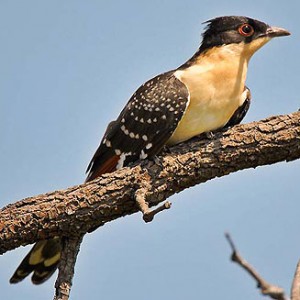Nothing locally as exciting as the Red Flanked Bluetail this month but a Great Spotted Cuckoo was on a golf course near Tenby for a fortnight. This species nests in Southern Europe so presumably it ‘overshot’ on its migration from Africa. Perhaps it will nest further north with a warming climate. It parasitizes crows and magpies, but unlike ‘our’ cuckoo does not destroy it’s hosts eggs. The young cuckoo is raised with the young crows or magpies. If a predator threatens the nest the juvenile cuckoo emits a noxious smell which deters the assailant and preserves both the cuckoo and its host’s young; so it might be a welcome addition to our UK breeding species.
Nearer to home Terry Stamp reports two regular Kingfishers on the Kenn River and also an Otter. Chris Blake mailed me to say that Siskins had arrived on his feeder and I received similar news from a Yatton garden. Siskins seem to often turn up in late winter (or early spring) but they have been rather uncommon this year.
John Ball has seen a pair of birds that he thought were Kestrels at the box by the village hall. Field voles have proliferated in the last few months, despite the wet weather and it could be a (much needed) bumper season for Owls and Kestrels if we have a fine spring and summer.
The warm weather in early March persuaded one of my local Blackcaps to sing on the 5th and it was joined by a Chiffchaff on the 9th. Both were record early dates for me: last year I recorded record late dates to hear these songs.
The Ravens that I mentioned last month at St Mary’s church in Yatton have moved to a pylon on Congresbury Moor where they have built a large nest. Bryan Thompson said that there were another pair around Kenn Church, but they too seem to have moved on.
There were large flocks of Dunlin at the sea wall early in the month, on one occasion being chased by a very optimistic Sparrowhawk, but by mid month they had moved on, with hardly any left.
A Short Eared Owl was reported perhaps attracted by the aforementioned abundance of voles and the first Wheatears and Sand Martins arrived by the 19th but quickly passed through. April is the prime arrival month, with Swallows and House Martins being the most visible, but lots of rarer species will be heading north.
Trevor Riddle 01934 835208.
Sorry, the comment form is closed at this time.